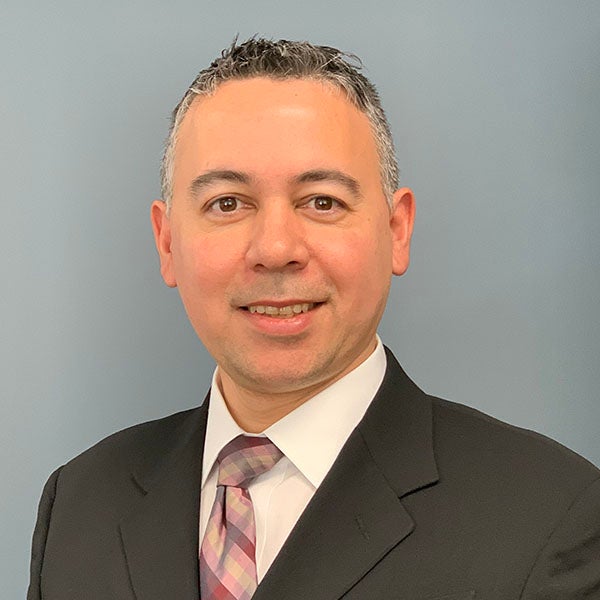Headaches 101: Insight from an Expert.
March 3, 2025
You may be one of the 3.1 billion people who have headache disorders. According to the World Health Organization, nearly half of the world’s population falls in that category. Because headaches impact so many people, we’ve pulled content from a recent Transforming Your Health podcast featuring Trinity Health Of New England’s Chair of Neurology, Pooia Fattahi, M.D., MBA. In this episode, Dr. Fattahi breaks down the common causes of headaches, effective treatments, and ways to prevent them. Whether you’re dealing with occasional tension headaches or chronic migraines, "Headaches 101: Insights from an Expert" provides essential information to help you take control of your health and find relief.
Q: Let’s start with the basics… Headaches 101… how prevalent are headaches in general?
A: Headaches are among the most common medical complaint and migraine specifically is the 3rd most common disorder and the seventh highest cause of disability worldwide.
- More than 90% of patients who present to their primary care provider for evaluation of headaches have a primary headache disorder.
- The direct and indirect socioeconomic costs of headaches to society are estimated at $14 billion per year.
- Globally 40% of the population suffers from tension type headache and 10% suffer from migraine.
- Migraines occur most commonly between the ages of 25 and 55 years and is three times more common in females.
- About three to five percent of the population suffers from chronic daily headaches globally.
Q: What are the different types of headaches?
A: A primary headache has no known underlying cause.
A secondary headache is the result of another condition causing traction on or inflammation of pain-sensitive structures.
The most common primary headaches include migraine, tension-type headache, and cluster headache.
Headaches related to infection, vascular disease, and trauma are examples of more common secondary headaches. Only one percent of patients with a brain tumor will have a headache as the sole complaint. Thankfully, the vast majority of patients who present to their primary care provider for an evaluation will have a primary headache disorder.
Q: Does family history play a role?
A: Yes, there are studies that show that certain migraine headaches can run in the family, however, most of the headaches are not inherited.
Q: Can you tell us more about migraine headaches?
A: Migraine is the third most prevalent disorder according to the 2010 Global Burden of Disease Survey and the seventh-highest cause of disability worldwide, however, not every headache is a migraine.
In order for a headache to qualify as migraine, there are certain criteria that need to be met:
- The patient should have moderate to severe pain.
- There should be photophobia or phonophobia.
- They are usually unilaterally located with pulsatile quality.
- Physical activity would cause aggravation of headaches.
- The headache attacks last between 4-72 hours if not treated.
Migraines are divided into episodic versus chronic migraines. If a migraine headache occurs more than 15 days per month, then it is considered a chronic migraine. If they occur less than 15 days a month, then it is considered an episodic migraine.
Q: What is the difference between a tension headache and a migraine?
A: Tension type headaches are not as severe as a migraine. They are far more common with a lifetime prevalence in the general population of up to 80%.
A tension-type headache is a dull, bilateral, mild- to moderate-intensity pressure–pain without any light or sound sensitivity. They could be episodic or chronic and easily distinguished from migraine. Infrequent tension-type headache is thought to be the form of headache experienced by nearly everyone at one time or another and typically does not require medical management.
Q: For those who get headaches often, when should they worry? How often is too often?
A: We used to say that if you have more than one headache per week, you need to start daily medication, however, we now know that some of the headaches, even if they occur twice a month, could be disabling and causing significant social and economic impact including taking too many days off from work or missing out on family events.
Q: So, say it’s time to see a doctor for reoccurring or severe headaches… what should someone expect coming into the appointment? Anything they should prepare ahead of time?
A:
- When patients come for an appointment, we will cover things like ‘how long have you had the headaches, what makes it better, what makes it worse, what is your family history? What medications have you tried?
- We will discuss some lifestyle items including:
- Coffee intake
- Water intake
- Stress
- Sleep
- Snoring
- We will do a physical exam to try to narrow down the location of the headache which can help us target what’s causing it.
Q: What treatment options are available for headaches… and is that different than treatment for migraines specifically?
A:
- In some cases, treatment will depend on the location/type of headache.
- EX: if neck pain/muscles are the cause, we may want an MRI/imaging to confirm; from there we may need to treat the source of the neck pain.
- There are medication options.
- Short term vs. long term migraine treatments.
- While the theory of migraine is still not proven, we know that some things can play a role in causing/resolving (ex: stress levels; hydration; etc.).
- Onabotulinum toxin A (commonly known as Botox) is also used commonly for headaches and other items.
Q: What does care for headaches/migraines look like long-term?
A: We always discuss with our patients that headaches are a chronic condition that we will manage and not really cure, just like diabetes management, high cholesterol or hypertension. These are conditions that require follow up visits, medications and other treatment modalities such as physical therapy, avoiding certain foods or better sleep hygiene, etc. Once the headaches are as best as we can get them, we will empower the patients to understand their headache pattern and medications so they can adjust based on how they feel.
Q: Are there any simple solutions or ways to prevent severe/chronic headaches or migraines?
A:
- Hydration
- Regular exercises/Stretching
- Adequate Sleep
- Avoid food triggers or environmental triggers such as bad posture
- Avoid taking too much over the counter medications
- Avoid excessive caffeinated beverages
Q: Any final thoughts or other words of advice?
A: If you have headaches, see your primary care provider or neurologist. Discuss with them how the headaches impact your daily activities. Share with them your experience with triggers or things that can make you feel better and be proactive in your treatment planning. Keep up with the stretching exercises and fluid intake!

Pooia Fattahi, MD, MBA
Chair of Neurology
Trinity Health Of New England
Trinity Health Of New England's team of board-certified neurologists provide specialized, comprehensive care for patients with brain, nerve and spinal disorders. From epilepsy to Multiple Sclerosis, stroke, and chronic pain, including headaches and migraines, our specialists utilize the resources and technologies available through our dedicated, state-of-the-art neuroscience units to provide comprehensive diagnostics and expert care tailored to each patient’s individual needs.
